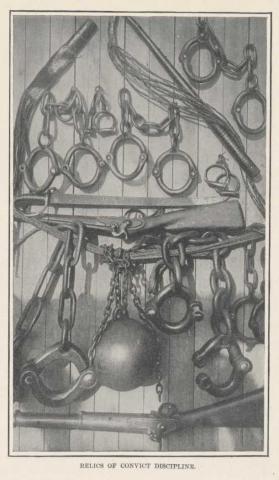October 31 Thursday –
The Clemens party boarded the Union Co.’s 2,598-ton ship Mararoa, to sail down the eastern coast of Tasmania to Hobart, then to New Zealand. Malcom Ross, a journalist, was on board and gave Sam several books on Tasmanian aboriginal history. Other passengers included Irish nationalist Michael Davitt, and Sam’s agent Carlyle G. Smythe.
November 1 Friday – Sam’s notebook:
Nov. 1 — noon. A lovely day, a brilliant sun. Warm in the sun, cold in the shade — an icy little breeze right out of the South. Passing between Tasmania & neighboring islands — islands whence the poor exiled Tasmanian savages used to gaze at their beloved land & cry; & die of heart-break. How glad I am that all these native races are dead & gone, or nearly so. The work was mercifully swift & horrible in portions of Australia.
November 2 Saturday – At 5:30 a.m. the Mararoa arrived in Hobart, Tasmania.
R.S. Smythe had initially planned for lectures in Launceton and Hobart, but Sam’s carbuncle attacks had resulted in a shorter schedule. All that was allowed for was a morning shore leave.
A little after 7 a.m. the son of Mr. & Mrs. Henry Dobson, a former Premier, arrived at the ship and invited the Clemenses to breakfast in Hobart with his parents, After breakfast Sam rode around Hobart with the elder Dobsons while Clara and Livy went with young Dobson and neighbors Mr. and Mrs. Walker, part way up Mount Wellington, then had wine and cake at the Walkers.
Sam rode around Hobart, “to get a glimpse of any convicts that might still remain on the island.” He went to the Refuge for the Indigent and found, “a crowd, there, of the oldest people I have ever seen,” . After Mrs. Dobson gave him a “leg-iron (broken) found in the bush — ages of rust on it,” the horrors of the convict system seemed to come alive for Twain and, for the remainder of his voyage to New Zealand, he made notes about convicts and the evils of transportation [Shillingsburg, At Home 125].
Sam also visited Alexander Morton (1854-1907) from New Orleans, curator of Hobart’s museum. Morton displayed aboriginal artifacts and samples of native fauna, including the Tasmanian devil.
Michael Davitt, Irish nationalist who was on board with Sam, recalled this day in his 1898 travel book: “As the Mararoa glided down the enchanting lake-like Derwent, with all its lovely panorama of natural beauty inviting a longer stay at ‘Sullivan’s Cove,’ Storm Bay and Tasman’s Peninsula recalled the convict days of Port Arthur, and Marcus Clarke’s For the Term of His Natural Life came up for discussion. Mark had read that truly great book, and had visited the asylum at Hobart that very morning, when there are a few score human remnants of the old convict period still living.…
Mark Twain grew indignant at the thought of doctors having looked on and sanctioned the savage punishments which could leave such evidence of their force and ferocity after so many years on the bent backs of the human wrecks at the asylum in Hobart.
“Unlike some celebrities, Mark Twain is not parsimonius with his talent. He entertained us in the smoke-room of the Mararoa with some capital anecdotes, which, however, cannot be done justice to in the retelling” [Life and Progress in Australasia 338].
November 3 Sunday –
A cold south wind blew on the Tasman sea, and Sam stayed in bed on board the Mararoa en route to New Zealand.
- Log in to post comments
